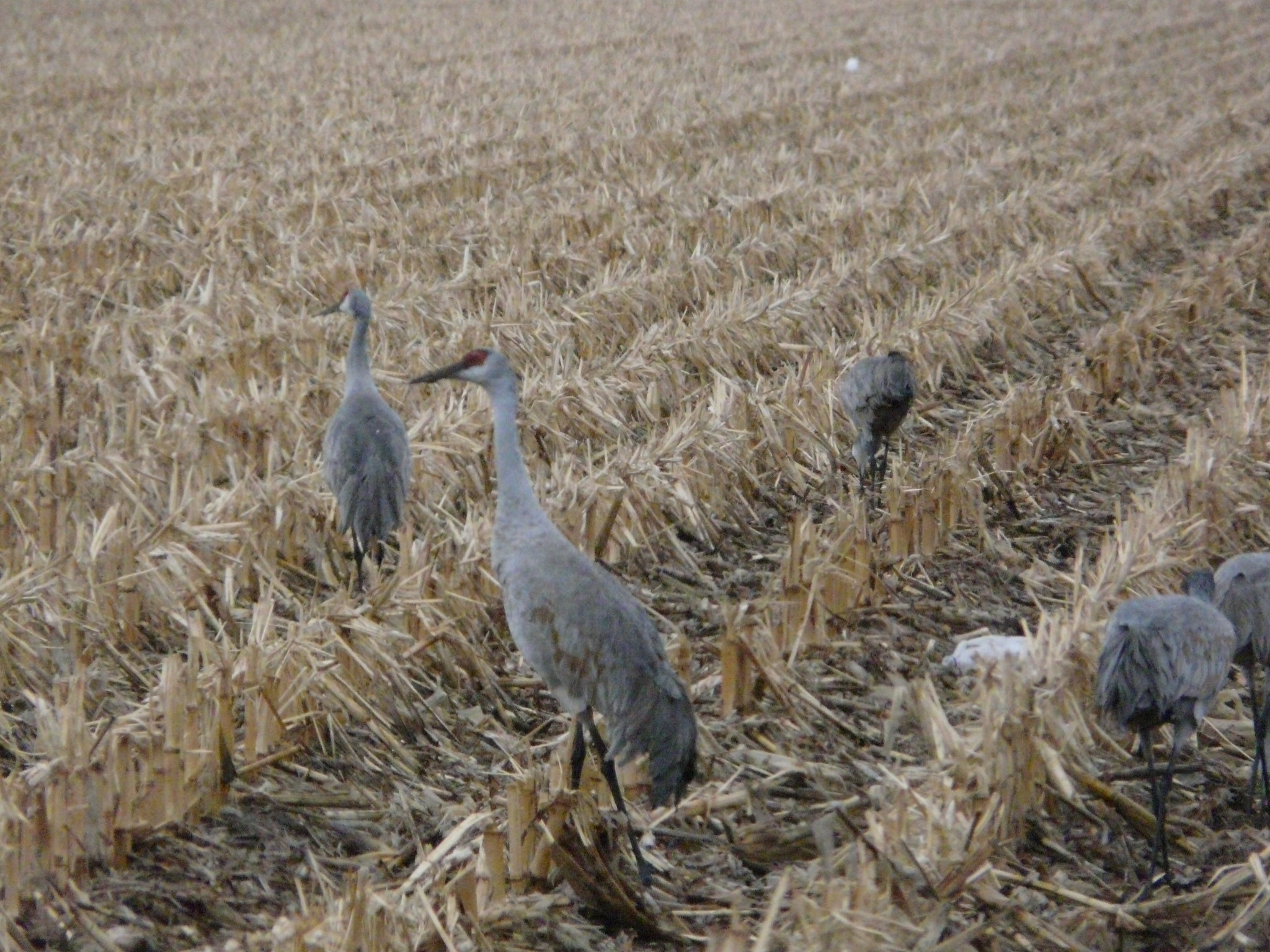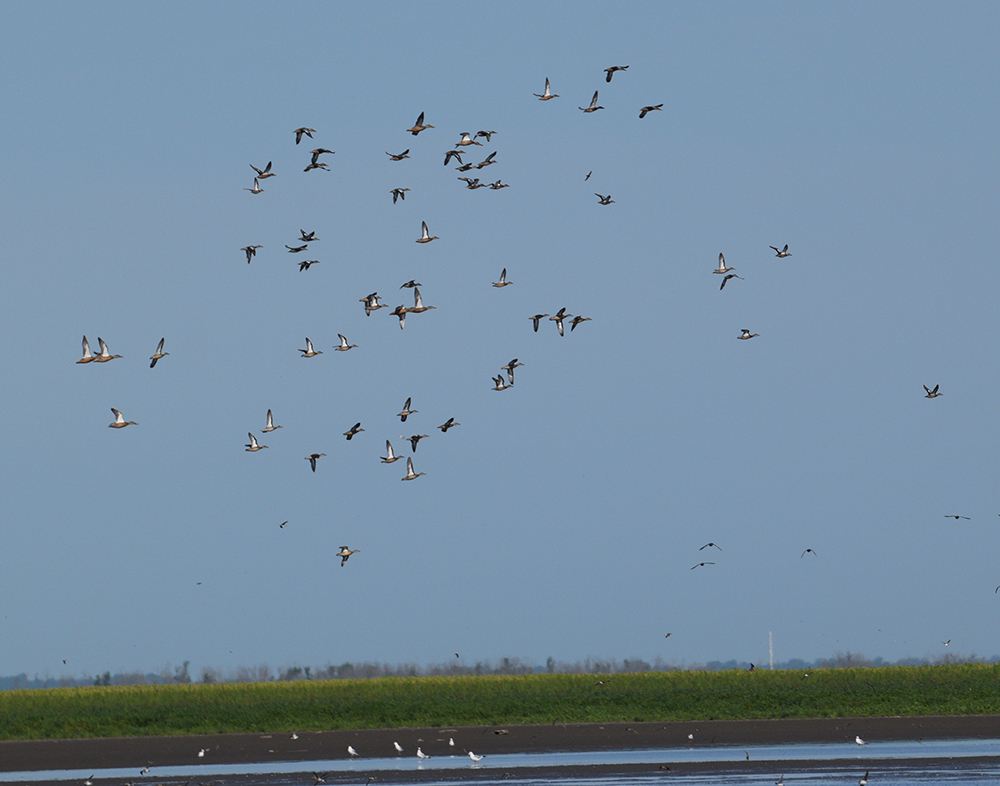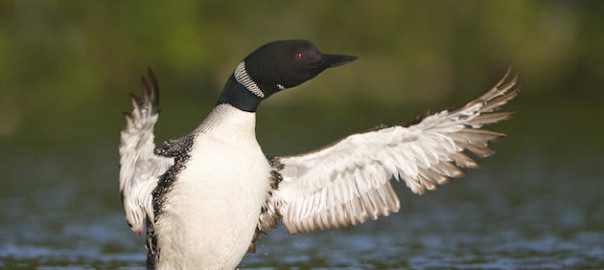
Flickr Larry Lamsa photo.
“They fall out of the sky like a lawn chair,” my co-worker told me after he returned from his first sandhill crane hunt.
“What do you do with a crane?” I asked.
“They’re called the ‘ribeye of the sky,’” he replied, and that was all I needed to know. I was up for sandhill crane hunting and now Alabama hunters will have their first opportunity in 103 years to hunt them thanks to the steady comeback this bird has made past few decades.
The Alabama Wildlife and Freshwater Fisheries (WFF) Division will conduct a draw hunt of 400 permits to hunt sandhill cranes, becoming the third state east of the Mississippi River to hold a sandhill hunt.
“The last sandhill crane hunting in Alabama was in 1916,” said Seth Maddox, WFF Migratory Game Bird Coordinator. “This is the first time in 13 years that we’ve had a new species open to hunting. The last was alligator in 2006. It’s pretty exciting.”
The sandhill crane season will be split with the first segment from December 3, 2019, to January 5, 2020. The second segment will be January 16-31, 2020.
The daily, season and possession limit will be three birds per permit. Hunters can harvest all three birds in one day if they choose.
“This sandhill crane season came about through the feedback of hunters,” Maddox said. “They started seeing increased numbers of sandhills while they were out hunting other species, especially waterfowl. Hunters wanted the opportunity to hunt this species in Alabama. They’d heard about the seasons in Kentucky and Tennessee from their friends. Hunters have paved the way for the species recovery of sandhill crane. We want to provide hunting opportunities when they are available.”

Flickr Karen and Brad Emerson photo
In the early 2000s, discussions began about possible sandhill crane seasons in the Mississippi and Atlantic flyways. In the Eastern U.S. the subspecies is called the giant sandhill crane.
Maddox said by 2010 the U.S. Fish and Wildlife Service (USFWS) approved a sandhill crane management plan that included a hunt plan for the Mississippi Flyway, which includes Alabama, Tennessee and Kentucky.
“Kentucky was the first state to take advantage of that,” Maddox said. “They opened their season in 2011. Tennessee opened their season in 2013.”
Thirteen states west of the Mississippi River have sandhill crane hunting seasons.
“We started counting sandhills in 2010 in conjunction with our aerial waterfowl surveys,” Maddox said. “We conduct the aerial surveys each fall and winter. Since 2010, we’ve seen a 16% increase on average per year in the state.”
In 2016, WFF staff began discussions about the possibility of a sandhill season and began the tedious process to get a hunting season approved by USFWS.
“We had to go through the Flyway (The Mississippi Flyway Council) process, just like any other state that wants to add a new season on migratory birds,” Maddox said. “We began discussing that with the Flyway. We gathered all of our data and put together a proposal for a hunt plan. It took a couple of years to get through that process.”
When that effort was completed, Alabama was granted a three-year experimental season, beginning in 2019.
WFF opted to make the season a limited draw with 400 permits that will be issued through a computer-controlled random draw. Those drawn must complete the process. Once approved, each permittee will be issued three tags for a maximum total harvest of 1,200 birds.
The registration process is limited to Alabama residents 16 or older or Alabama lifetime license holders. Applicants must have their regular hunting license and a state waterfowl stamp to apply.
Maddox said the registration process will open in September and be open for several weeks. The drawing will occur in October.
However, the process is not complete even if you are lucky enough to be drawn.
“If drawn, they will have to take an online test that includes species identification and regulations,” Maddox said. “Once they pass that test, we will issue the permit and tags. Then they must purchase a federal duck stamp and HIP (Harvest Information Program) license, and if hunting on a WMA (wildlife management area), a WMA license. Once they have all that, they are good to hunt.”

Flickr Brian Ralphs photo.
Maddox said the number of permits was derived from the number of sandhill cranes counted over a five-year average. The guidelines under the hunt plan allow a state to harvest 10 percent of that five-year average.
“Our five-year average is 15,029 birds,” he said. “For the experimental season, we elected to keep the harvest below 10 percent because we wanted to take it slow and ensure hunting will not be detrimental to the population.”
Maddox said the majority of migratory sandhill cranes are found in the Tennessee River Valley with some birds wintering in Weiss Reservoir on the Coosa River.
Sandhill cranes prefer wetland habitat with emergent vegetation. Unlike other wading birds, sandhills don’t target fish or other aquatic species for forage.
“Sandhills mainly eat small grains,” Maddox said. “You see them feeding a lot in harvested grain fields, corn fields particularly in Alabama. They normally roost near water and forage during the day in the harvested grain fields. They typically roost in water to stay away from predators. But they roost in large numbers to give them more eyes to watch for predators.”
Sandhills stand 4 to 5 feet tall with a wingspan of 4 to 6 feet. Maddox said those who have harvested sandhills rave about the taste of the bird, although he’s never eaten it.
“I know they call them the ribeye of the sky,” he said. “They’re known as one of the best-tasting migratory birds out there.”
Hunting will be limited to north Alabama in a zone that runs from the Georgia state line down Interstate 20 to Birmingham, then north of I-22 to the Mississippi state line.
Maddox said the typical migration route for sandhills is to enter north Alabama before moving east into Georgia and then south to Florida.

Flickr Overduebooks photo
“There are areas south of Birmingham associated with non-migratory populations in southeast Mississippi and in Florida,” he said. “Those birds are protected. That’s why we chose to keep it in north Alabama.”
After the season, all permit holders will be required to take a postseason survey provided by WFF. If those permit holders fail to complete the postseason survey, they will not be eligible for the drawing in the future. WFF is required to provide that information to USFWS to continue the experimental seasons.
“Sandhills have great eyesight and are pretty wary,” Maddox said. “It can be tough hunting. Some people will pass-shoot them and others will use blinds and decoys. It will be interesting the first couple of years to see how hunters adapt.”



